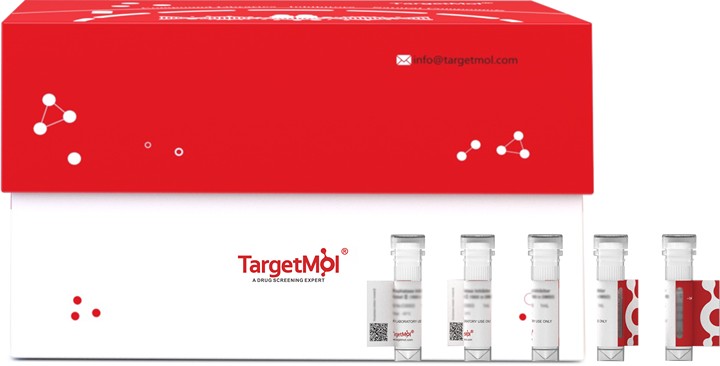 您的购物车当前为空
您的购物车当前为空
FABP2 Protein, Human, Recombinant (His)
一键复制产品信息Fatty acid binding protein (FABP) is one of the intracellular proteins, with a low molecular weight of approximately 15 kDa, that plays important roles in the transportation and metabolism of long-chain fatty acids. FABP family proteins could be used as tissue specific injury marker based on the following characteristics of FABP. The intestinal fatty acid binding protein (I-FABP), or fatty acid-binding protein 2 (FABP2), an intracellular protein expressed only in the intestine, involved in the absorption and intracellular transport of dietary long chain fatty acids. The FABP2 gene is proposed as a candidate gene for diabetes because the protein it codes is involved in fatty acid (FA) absorption and metabolism. Numerous studies have assessed FABP2 gene variants. A transition of G to A at codon 54 of FABP2 results in an amino acid substitution (Ala54 to Thr54), which is common in diverse populations and results in increased FA absorption in vivo. Some evidence indicates that this variant may be associated with type 2 diabetes. This polymorphism was associated with some cardiovascular risk factors. The cytosolic human intestinal fatty acid binding protein (hFABP2) is proposed to be involved in intestinal absorption of long-chain fatty acids. FABP2 may also help maintain energy homeostasis by functioning as a lipid sensor.

FABP2 Protein, Human, Recombinant (His)
一键复制产品信息| 规格 | 价格 | 库存 | 数量 |
|---|---|---|---|
| 5 μg | ¥ 258 | 6-8日内发货 | |
| 10 μg | ¥ 429 | 6-8日内发货 | |
| 20 μg | ¥ 683 | 5日内发货 | |
| 50 μg | ¥ 1,350 | 5日内发货 | |
| 100 μg | ¥ 2,630 | 5日内发货 |
产品信息
| 生物活性 | Activity testing is in progress. It is theoretically active, but we cannot guarantee it. If you require protein activity, we recommend choosing the eukaryotic expression version first. |
| 产品描述 | Fatty acid binding protein (FABP) is one of the intracellular proteins, with a low molecular weight of approximately 15 kDa, that plays important roles in the transportation and metabolism of long-chain fatty acids. FABP family proteins could be used as tissue specific injury marker based on the following characteristics of FABP. The intestinal fatty acid binding protein (I-FABP), or fatty acid-binding protein 2 (FABP2), an intracellular protein expressed only in the intestine, involved in the absorption and intracellular transport of dietary long chain fatty acids. The FABP2 gene is proposed as a candidate gene for diabetes because the protein it codes is involved in fatty acid (FA) absorption and metabolism. Numerous studies have assessed FABP2 gene variants. A transition of G to A at codon 54 of FABP2 results in an amino acid substitution (Ala54 to Thr54), which is common in diverse populations and results in increased FA absorption in vivo. Some evidence indicates that this variant may be associated with type 2 diabetes. This polymorphism was associated with some cardiovascular risk factors. The cytosolic human intestinal fatty acid binding protein (hFABP2) is proposed to be involved in intestinal absorption of long-chain fatty acids. FABP2 may also help maintain energy homeostasis by functioning as a lipid sensor. |
| 种属 | Human |
| 表达系统 | E. coli |
| 标签 | C-6xHis, N-6xHis |
| 蛋白编号 | P12104 |
| 别名 | MGC133132,I-FABP,fatty acid binding protein 2,FABPI |
| 蛋白构建 | Met1-Asp132 |
| 蛋白纯度 | > 95% as determined by SDS-PAGE |
| 分子量 | 18.44 kDa (predicted); 17 kDa (reducing conditions) |
| 内毒素 | < 1 EU/μg by the LAL method. |
| 蛋白性状 | Lyophilized powder |
| 缓冲液 | Lyophilized from a 0.2 μm filtered solution of 20 mM PB, 50 mM NaCl, 8% Trehalose, 0.05% Tween80, pH6.0. |
| 复溶方法 | Reconstitute the lyophilized protein in distilled water. The product concentration should not be less than 100 μg/ml. Before opening, centrifuge the tube to collect powder at the bottom. After adding the reconstitution buffer, avoid vortexing or pipetting for mixing. |
| 存储 | It is recommended to store recombinant proteins at -20°C to -80°C for future use. Lyophilized powders can be stably stored for over 12 months, while liquid products can be stored for 6-12 months at -80°C. For reconstituted protein solutions, the solution can be stored at -20°C to -80°C for at least 3 months. Please avoid multiple freeze-thaw cycles and store products in aliquots. |
| 运输方式 | In general, Lyophilized powders are shipping with blue ice. |
| 研究背景 | Fatty acid binding protein (FABP) is one of the intracellular proteins, with a low molecular weight of approximately 15 kDa, that plays important roles in the transportation and metabolism of long-chain fatty acids. FABP family proteins could be used as tissue specific injury marker based on the following characteristics of FABP. The intestinal fatty acid binding protein (I-FABP), or fatty acid-binding protein 2 (FABP2), an intracellular protein expressed only in the intestine, involved in the absorption and intracellular transport of dietary long chain fatty acids. The FABP2 gene is proposed as a candidate gene for diabetes because the protein it codes is involved in fatty acid (FA) absorption and metabolism. Numerous studies have assessed FABP2 gene variants. A transition of G to A at codon 54 of FABP2 results in an amino acid substitution (Ala54 to Thr54), which is common in diverse populations and results in increased FA absorption in vivo. Some evidence indicates that this variant may be associated with type 2 diabetes. This polymorphism was associated with some cardiovascular risk factors. The cytosolic human intestinal fatty acid binding protein (hFABP2) is proposed to be involved in intestinal absorption of long-chain fatty acids. FABP2 may also help maintain energy homeostasis by functioning as a lipid sensor. |





 |
|